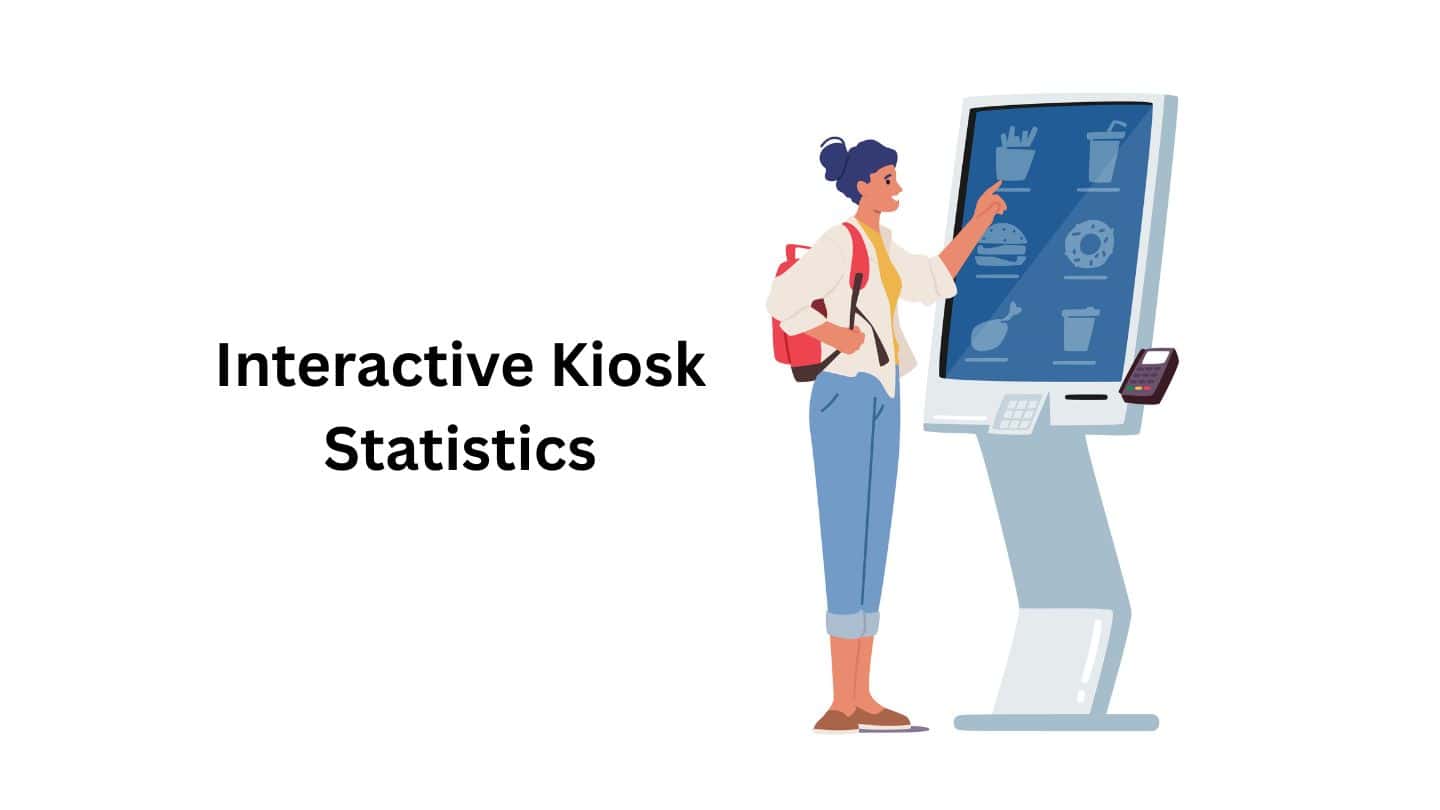Workplace Stress Statistics By Effect, Burnout, Work-Life Balance and Facts

Updated · Feb 13, 2025


TABLE OF CONTENTS
Introduction
Workplace Stress Statistics: Workplace stress can seriously affect both your mind and body. One of the biggest challenges at work is stress, and it can show up in many different ways, no matter the industry or job. Stress at work can hurt your relationships, lower your productivity, make you less happy, and even lead to quitting your job.
For businesses, it can cause unhappy employees, higher turnover, and less work getting done. This article will go over important facts, numbers, and trends about workplace stress. We shall shed more light on Workplace Stress Statistics through this article.
Editor’s Choice
- In 2023, workplace stress in the U.S. costs businesses about $300 billion every year.
- In the same year, 56% of government and corporate workers in the U.S. said they felt somewhat burned out, and 27% said they felt severely burned out because of stress.
- The heavy stress and burnout led to many Millennials (43%) and Gen Z (44%) leaving their jobs.
- In 2023, 52% of men and 63% of women felt less stressed, thanks to remote work. 75% of employees agreed that remote work helped improve employee retention.
- In 2023, 30% of men and 21% of women said that working 6 days a week was more stressful than working just 5 days.
- On a scale of 1 to 10, the average American rates their stress level as 4.9.
- Stress causes more than 50% of people to lose interest in their jobs, leading to lower productivity.
- To cope with stress, both men and women often smoke (27%), smoke more often (25%), and drink more caffeine (31%).
- In 2023, 62% of working women in the U.S. and Canada said they felt stressed every day, compared to 52% of men.
- In Australia and New Zealand, 47% of workers reported high-stress levels, and 45% of workers in North Africa and the Middle East said the same.
- 39% of workers say their workload is the main cause of stress at work.
- Workplace Stress Statistics stated that 80% of employees said that changes in leadership at work increased their stress.
- One million workers in the U.S. miss work every day due to stress.
- Stress-related absenteeism caused by depression costs U.S. employers about $51 billion each year, plus another $26 billion in treatment expenses.
- 83% of U.S. workers experience stress at work, and almost 25% say their job is the biggest source of stress in their lives.
What Is Workplace Stress?
Many studies show that job stress is a major problem for American adults, and it has been getting worse over the years. When people feel their job has too many demands and too little control, it can lead to serious health issues like heart attacks and high blood pressure.
In cities like New York and Los Angeles, the link between job stress and heart problems is so well recognised that if a police officer has a heart attack—whether on duty or off—they are treated as having a work-related injury and are compensated for it.
Stress is different for everyone, and people can react to the same situation in different ways. For example, one survey found that many police officers found doing paperwork more stressful than dealing with the dangers of chasing criminals. How stressful a job feels depends on how demanding the work is and how much control the person feels they have over it. Research shows that workers who feel overwhelmed by high demands but have little control are at a higher risk for heart disease.
General Workplace Statistics
- Two-thirds of women with flexible work options plan to stay with their employer for over three years, while only 19% of women without flexibility say the same.
- 81% of desk workers want more flexibility in their jobs.
- Workplace stress, which results in employee absences, lower productivity, and work-related injuries, costs the economy $190 billion every year.
- Around the world, knowledge workers (such as tech workers or office employees) are happier with remote work compared to working in an office, with a +25.7% improvement in their work-life balance.
- 83% of workers say that work burnout negatively affects their relationships.
- Workplace Stress Statistics stated that almost 55% of Americans feel stressed during the day.
- 57% of workers in the U.S. and Canada experience stress every day, compared to just 43% of people worldwide.
- Workplace stress in the U.S. and Canada has also increased by 8% over the past year.
- Only 6% of workers say they don’t feel stressed at work. Among those who do, 23% say their stress is high, and 6% describe it as extremely high.
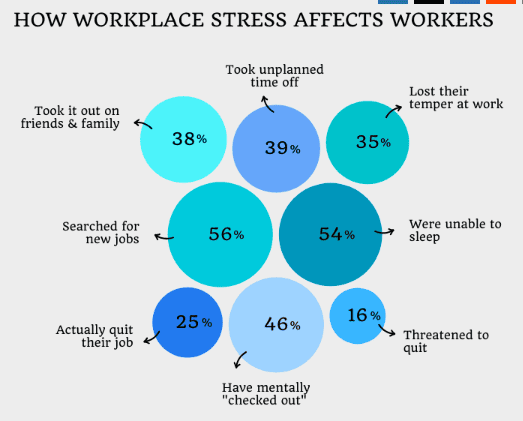 (Source: selectsoftwarereviews.com)
(Source: selectsoftwarereviews.com)
- 30% of people in the survey said their job or career is a regular cause of stress. For Millennials and Gen Z, this number rises to 44%, showing that younger generations are dealing with more stress than before.
- Workplace Stress Statistics stated that around 48% of employees said they have become more indifferent or cold toward others since starting their jobs.
- 67% of employees said stress at work has caused them problems, with over 10% saying these problems have seriously affected their lives.
- 42% of workers reported that yelling and verbal abuse are common in their workplace, and 29% admitted to yelling at co-workers because of stress.
- About 50% of workers in North America, Latin America, the Caribbean, and Canada say they feel stressed daily.
- Stress at work leads to 120,000 deaths every year and costs $190 billion in medical expenses annually.
- In the 2010s, middle-aged workers were 27% more likely to believe that stress would impact their financial situation compared to workers in the 1990s.
- Businesses typically spend about 75% of an employee’s annual salary to replace staff or cover the cost of lost productivity when employees leave.
Cost of Workplace Stress Statistics (in Money and Time)
- S. employees spend an average of 2.1 hours each week dealing with workplace conflict, costing businesses around $359 billion annually. This is equivalent to 385 million days a year spent arguing instead of being productive. This adds up to about 2.5 weeks of lost productivity per worker each year.
- Workplace conflict costs U.K. employers about £28.5 billion every year, including the costs of managing and resolving disputes. This works out to about £1,000 per employee each year, or nearly £3,000 for each person involved in conflict.
- In some companies, 10% of workers spend six or more hours a week handling conflict. Also, 51% of HR staff spend between 1 and 5 hours per week managing disagreements.
- Companies with a strong corporate culture have a much lower turnover rate (13.9%) compared to those with a poor culture (48.4%).
- Workplace Stress Statistics stated that almost 25% of workers have seen colleagues take time off due to workplace conflict.
- 9% of employees have experienced project failures caused by workplace conflicts.
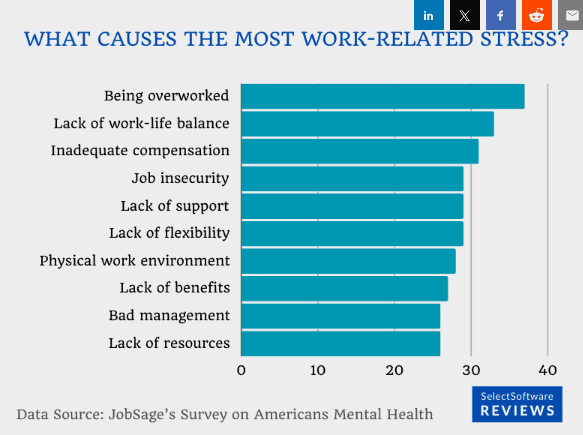 (Source: selectsoftwarereviews.com)
(Source: selectsoftwarereviews.com)
- In 2023, 81,055 discrimination complaints were filed in U.S. workplaces, resulting in more than $665 million in damages for the victims.
- S. companies face a 10.5% chance of being sued for employment-related issues.
- Most employment cases don’t go to court, but when they do, the average judgment is about $200,000, plus the cost of defending the case. About 25% of cases result in judgments of $500,000 or more.
- Replacing an entry-level employee costs about 30-50% of their annual salary. Replacing a mid-level employee costs around 150% of their salary, and replacing a high-level or specialized employee costs about 400% of their salary.
- 18% of employees quit their jobs because of conflicts at work.
- Workplace Stress Statistics stated that almost 13% of employees are moved to different departments because of conflicts.
- 83% of U.S. workers experience daily work-related stress, and 76% say it affects their relationships.
- Additionally, 50% of employees need to be more engaged in their work, leading to lower productivity. 39% say their stress mainly comes from too much work.
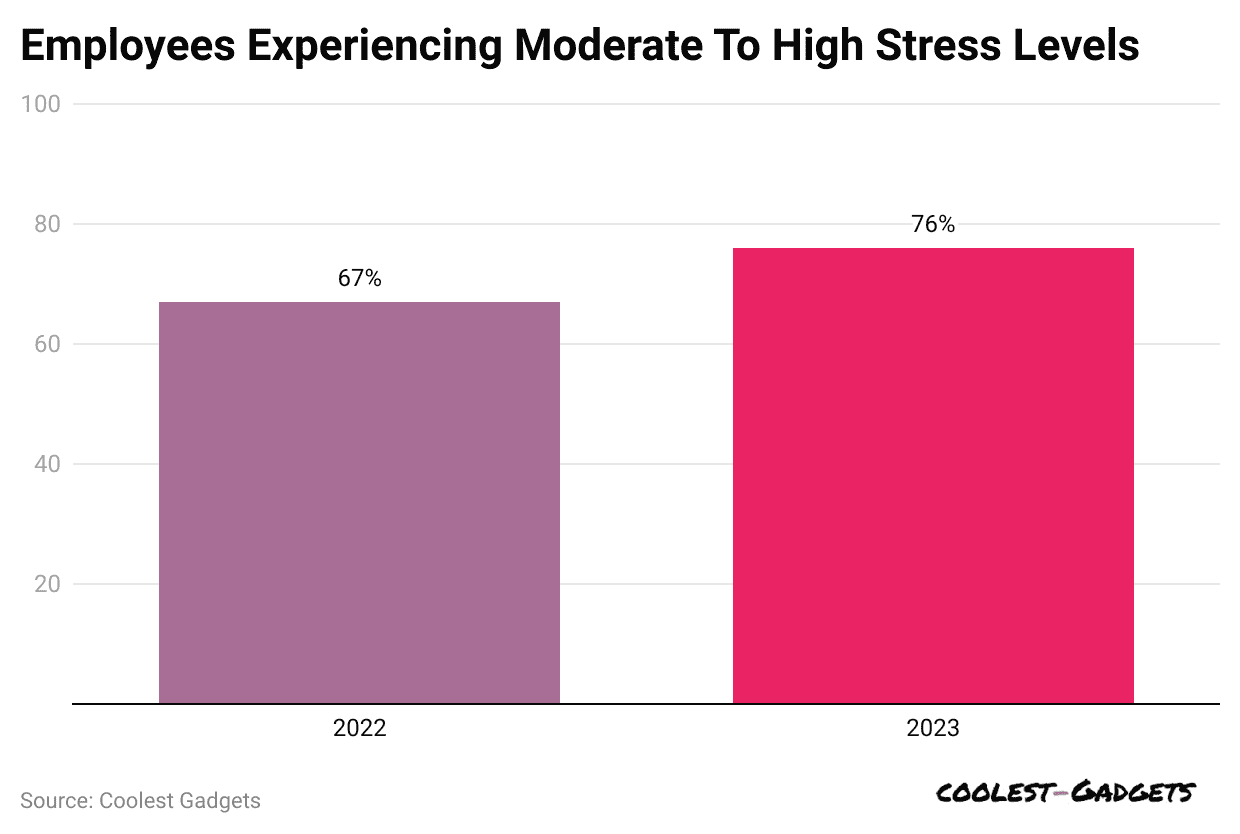 (Reference: championhealth.com)
(Reference: championhealth.com)
- Disengaged employees cost companies about 18% of their annual salary.
- Between 2018 and 2019, 35% of workers reported experiencing conflict, affecting 9.7 million employees. While most stayed at their jobs, 5% quit, 9% took sick leave, and 56% reported feeling stressed, anxious, or depressed because of the conflict.
- Workplace Stress Statistics stated that nearly 16% of employees are fired due to conflicts at the workplace.
Stress Effect on Health Statistics
Workplace stress can hurt a company’s profits, but workers should also consider how it affects their health. Even if stress feels manageable sometimes, dealing with it over a long period can have a negative impact on one’s well-being.
 (Reference: enterpriseappstoday.com)
(Reference: enterpriseappstoday.com)
- As of 2023, workers report the following physical effects of workplace stress:
-
- 83% feel emotionally exhausted
- 62% experience neck pain due to work
- 44% have tired or strained eyes
- 34% struggle with sleeping problems
- 12% suffer from pain in their hands.
- Stress-related health problems cost companies about $200 billion to $300 billion every year due to lost productivity.
- Depression alone leads to $51 billion in costs from workers missing work, plus about $26 billion in medical treatment costs.
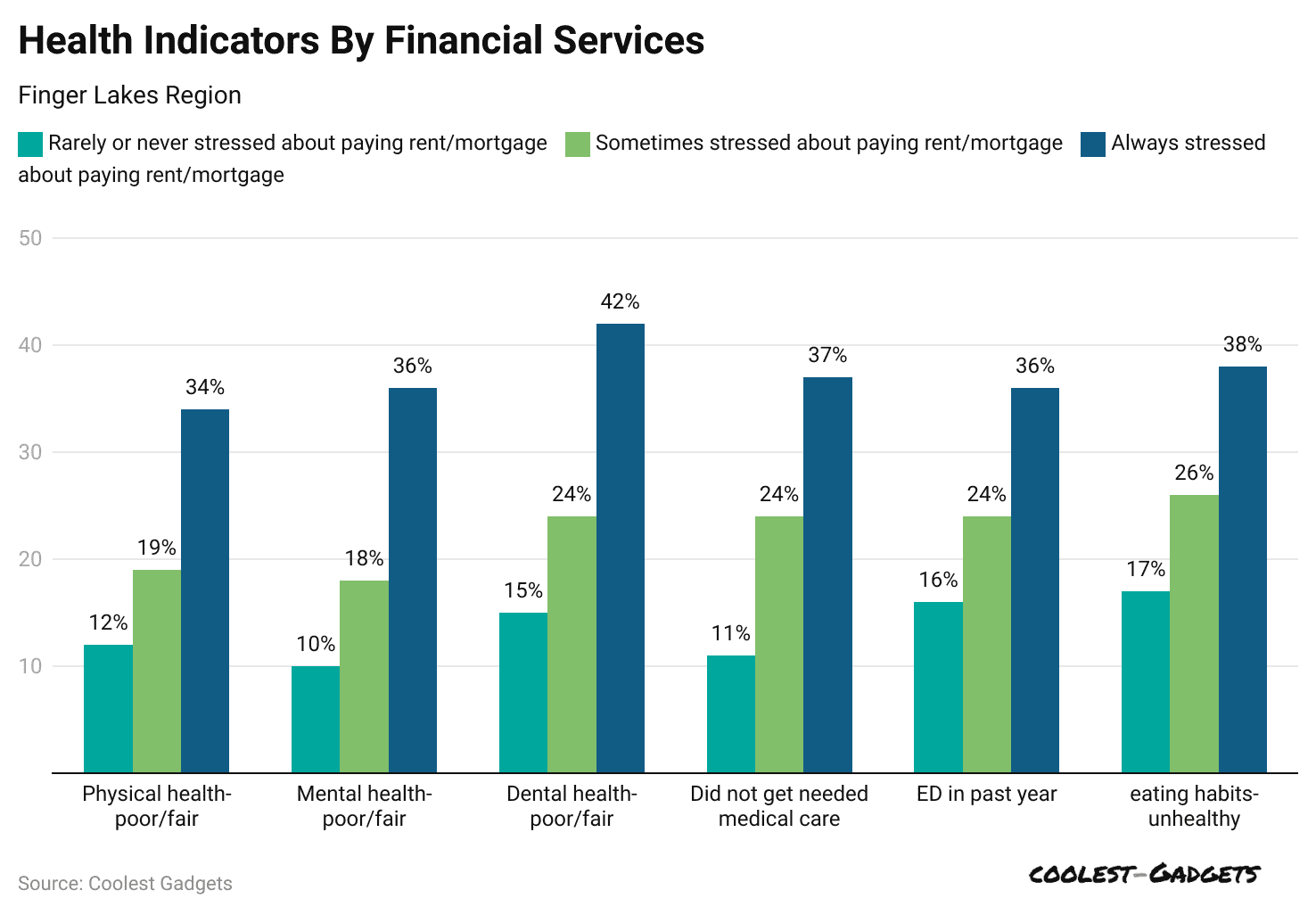 (Reference: commongroundhealth.org)
(Reference: commongroundhealth.org)
- Businesses usually spend around 75% of an employee’s salary to replace them or make up for lost productivity. In 2013, the cost of lost productivity from employees missing work due to poor health was over $84 billion.
- Almost 80% of employees say they feel stressed at work, and about half say they need help managing that stress.
- Companies that offer good stress management programs can reduce sick leave costs by up to 20%.
- Every day, 1 million workers miss work because of stress, as per Workplace Stress Statistics.
- In 2023, 72% of U.S. employees said stress caused them to have trouble sleeping.
- More than 50% of workers report regularly working 12-hour days, and many also skip lunch because of stress.
- At the end of the day, about 62% of employees have neck pain, 44% suffer from eye strain, and 34% find it hard to fall asleep because of stress. This ongoing stress can harm both mental and physical health.
- High levels of workplace stress cause about 120,000 deaths and result in $190 billion in healthcare costs each year.
- Depression alone leads to $51 billion in absenteeism costs and $26 billion in medical expenses.
- Employees with high stress have healthcare costs that are twice as high as those of workers without stress.
Remote Work Burnout Statistics
- Burnout is becoming a bigger issue worldwide. According to a survey by Deloitte with over 1,000 participants, 77% of employees say they have experienced burnout at their current jobs.
- 91% say stress or frustration at work lowers the quality of their work, and 83% say burnout negatively affects their relationships.
- Even people who love their jobs still feel stressed. 64% of employees report feeling stressed at work on a regular basis.
- About 70% of professionals feel that their employers need to do more to prevent burnout. Additionally, 25% of workers use only some of their vacation days each year.
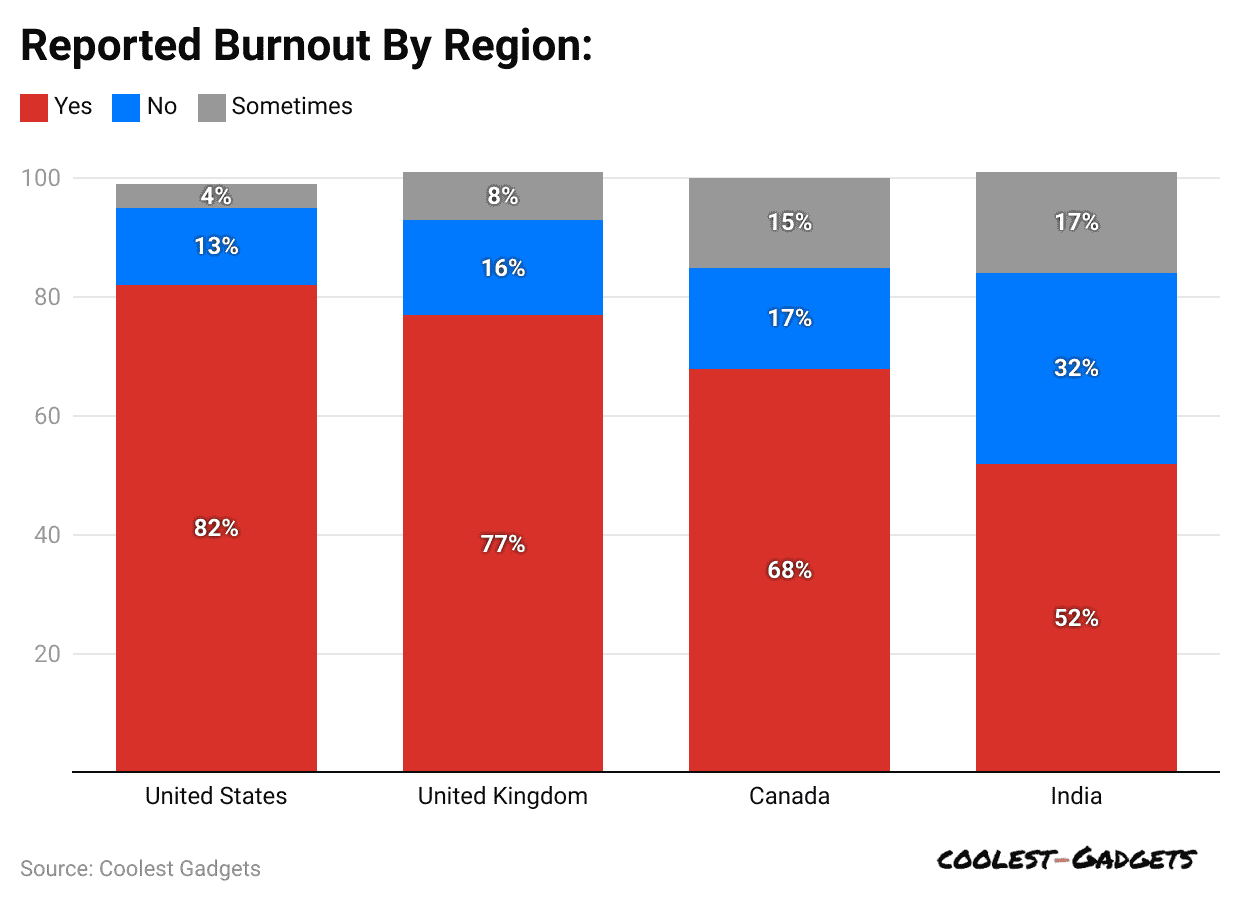 (Reference: density.io)
(Reference: density.io)
- A study by Stanford found that U.S. workers are more stressed than ever due to work-related issues.
- These stress factors, such as long hours and high job demands, contribute to about 120,000 deaths annually and $190 billion in healthcare costs each year.
- This represents 5% to 8% of the total annual healthcare spending, caused by workplace stress ($48 billion), lack of insurance ($40 billion), and struggles with balancing work and family life ($24 billion).
- A survey by Workplace Stress Statistics found that 92% of employees want to work from home at least one day per week.
- 80% of the same group would prefer to work from home more than 3 days a week.
- Workers today are 3 times more likely to report mental health problems than they were in the past.
- A survey by FlexJobs found that 76% of employees say stress at work affects their mental health.
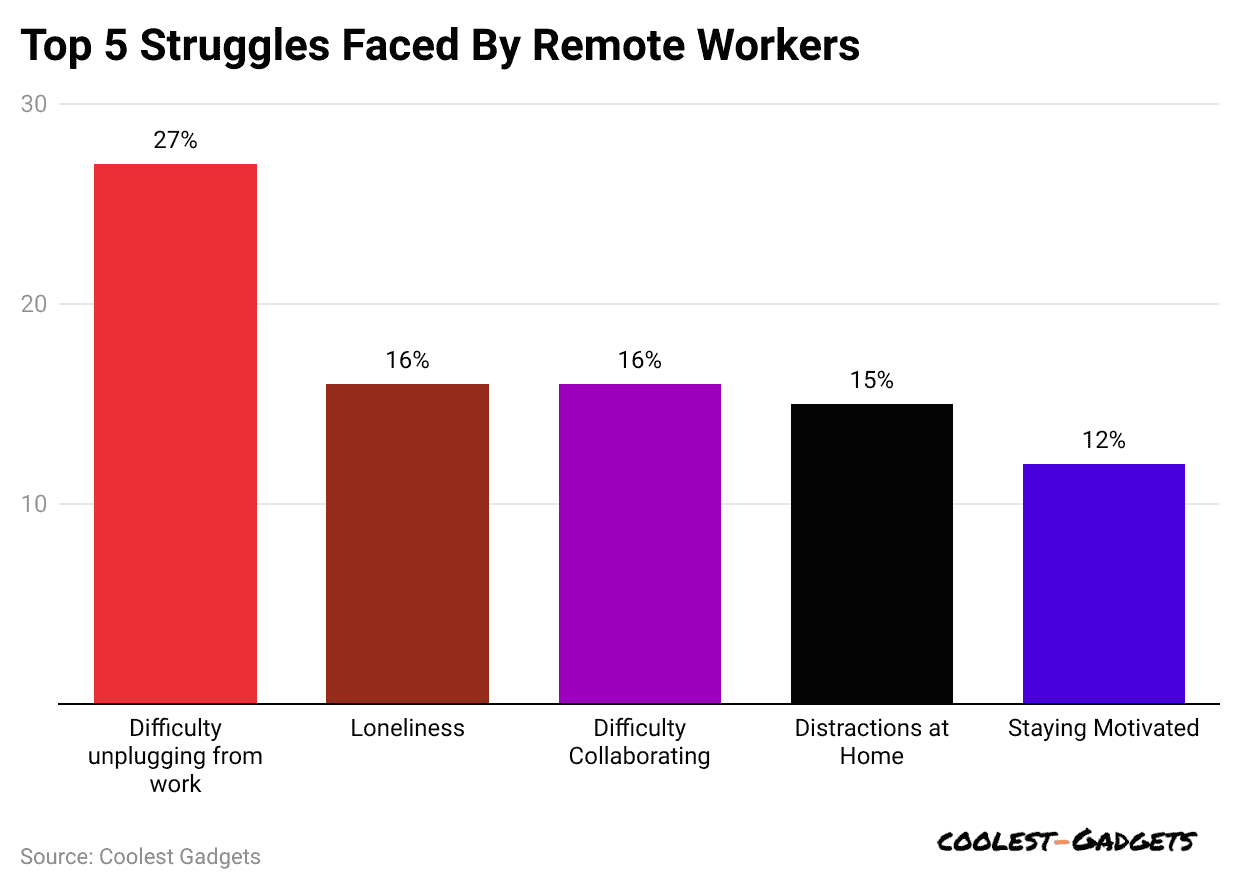 (Reference: ergonomictrends.com)
(Reference: ergonomictrends.com)
- 48% of employees feel they don’t have enough emotional support at work to cope with stress.
- A survey of 1,500 people by Mental Health America (MHA) and FlexJobs found that 75% of workers have experienced burnout at work, and 40% of them said it happened during the pandemic.
- Workplace Stress Statistics stated that around 65% of remote workers say they work more hours now than they did when they worked in an office.
- Over 75% of employees agree that workplace stress harms their mental health, leading to conditions like depression or anxiety. Of those, 17% strongly agree, meaning they are at higher risk of these problems.
- A survey by Workplace Stress Statistics showed that 56% of workers think the best way for companies to help them is by offering more flexibility during the workday.
- 43% said providing mental health days and encouraging employees to take time off would be helpful.
- 28% of workers said better health insurance and more paid time off would be the most effective support.
Work-life balance: Gender Differences Statistics
- Workplace Stress Statistics stated that almost 34% of women and 26% of men say they feel burned out “always” or “very often.”
- Women who work part-time remotely (hybrid) are more likely to experience burnout (38%) compared to those who work completely from home (31%) or are fully on-site (34%).
- There is a noticeable gender gap in burnout for people in roles like individual contributors or project managers, but men and women in management positions report similar levels of burnout.
- The burnout gap between men and women is almost the same for workers with or without school-age children.
- Men’s burnout risk stays the same, regardless of whether they work remotely, in a hybrid setup, or on-site.
- Deloitte’s Women @ Work report shows that having flexible hours is important for keeping women engaged and helping them stay longer at their jobs.
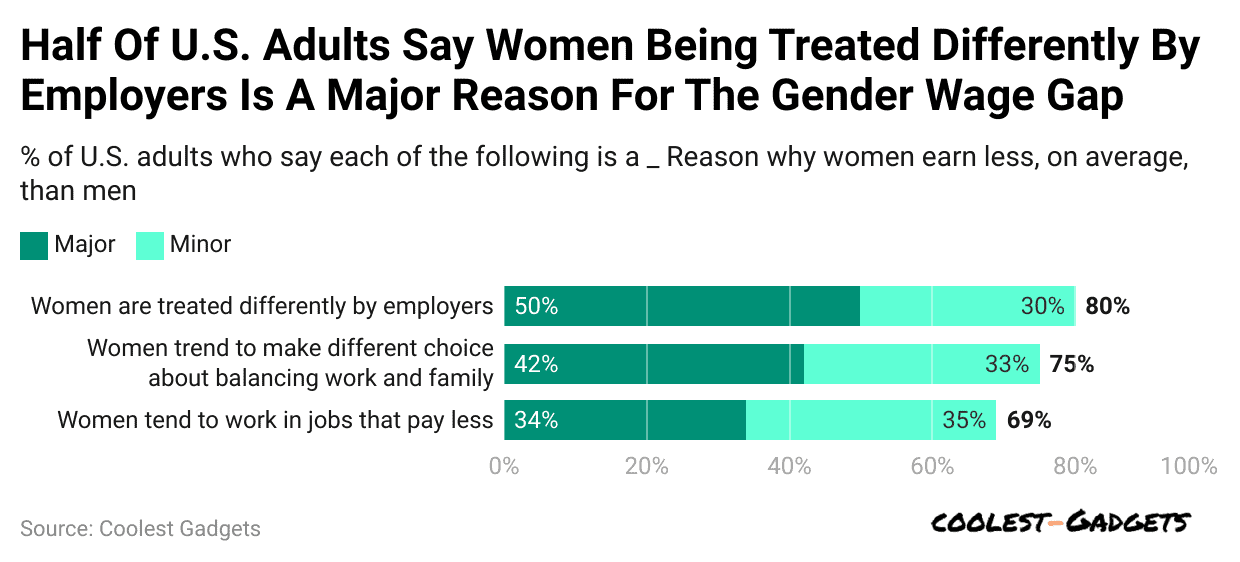 (Reference: pewresearch.org)
(Reference: pewresearch.org)
- Workplace Stress Statistics stated that around 97% of women think asking for more flexible hours could hurt their chances of being promoted.
- Two-thirds of women who have highly flexible work schedules say they plan to stay with their employer for more than three years. In contrast, only 19% of women without flexibility plan to stay that long.
- About one-third of women in hybrid work environments experience unpredictable hours and a lack of flexibility, which have become worse since 2022.
- Only 5% of organisations are seen as leaders in gender equality, providing better support for work-life balance.
- Only 20% of women working for companies that support gender equality feel they don’t have enough flexibility, compared to 45% in companies that don’t offer as much support.
- In 2023, the lack of flexible hours became the main reason women wanted to leave their jobs. 97% of women said that asking for more flexible hours could hurt their chances of being promoted.
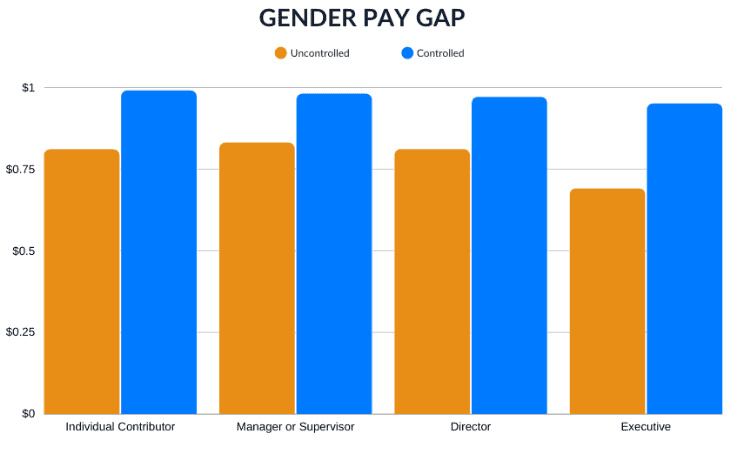 (Source: lorman.com)
(Source: lorman.com)
- Global burnout reached 40%, with women experiencing 32% more burnout than men.
- Workers who have full schedule flexibility report being 29% more productive and 53% better at focusing than those without flexibility.
- Workplace Stress Statistics show that almost 94% of global desk workers want flexible hours, which can improve job satisfaction and reduce burnout.
- 46% of women report feeling burned out, compared to 37% of men.
- Younger workers (under 30) are more likely to feel burned out, with 48% of them reporting burnout at work.
- 67% of men say work-life balance is very important when choosing a job, while 78% of women feel the same way.
- In OECD countries, 10% of workers put in more than 50 hours a week of paid work.
- Workers in Mexico, Turkey, and Colombia are especially likely to work long hours, with 27% in Mexico, 25% in Turkey, and 24% in Colombia regularly working long hours.
Workplace Stress Statistics by Region
- In the United States, full-time office workers report their stress levels as follows:
-
- 39% experience moderate stress
- 27% feel low stress
- 23% have high stress
- 6% deal with unmanageable stress
- 5% say they feel no stress at all.
- In East Asia, 55% of workers face stress on a daily basis, making it one of the regions with the highest stress levels.
- About 50% of employees in North America, Latin America, the Caribbean, and Canada also report feeling stressed every day.
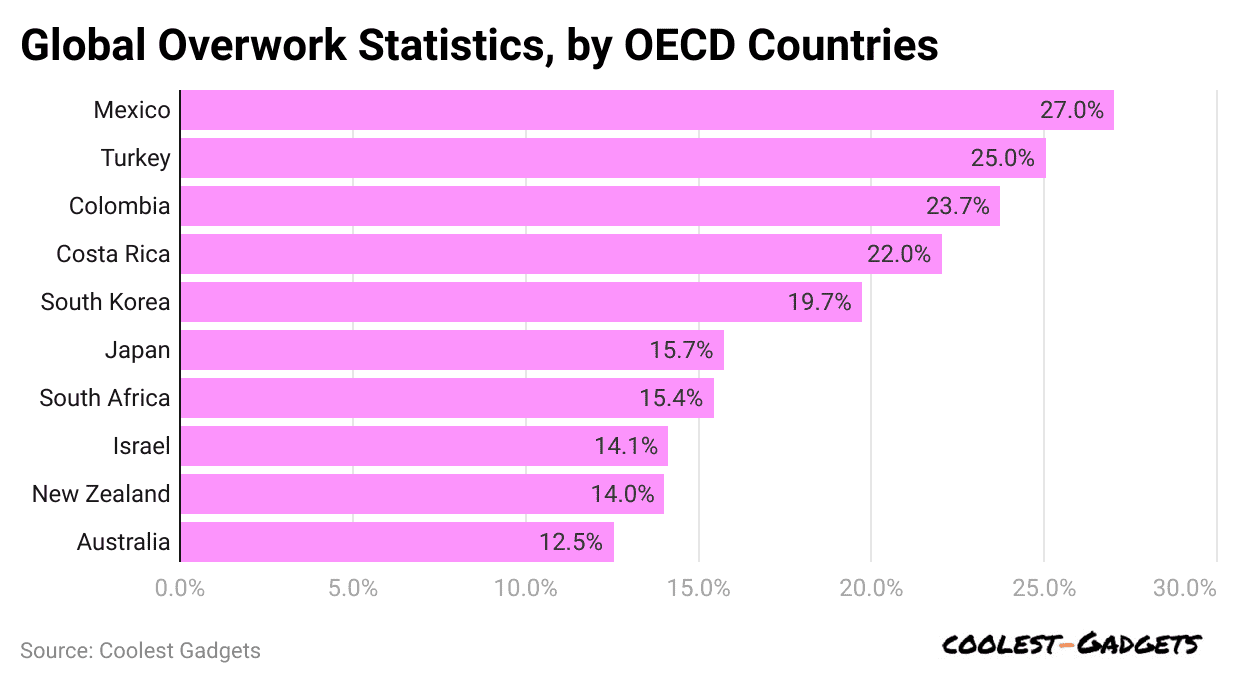 (Reference: enterpriseappstoday.com)
(Reference: enterpriseappstoday.com)
| Country | % |
|
Mexico |
27.0% |
| Turkey |
25.0% |
|
Colombia |
23.7% |
| Costa Rica |
22.0% |
|
South Korea |
19.7% |
| Japan |
15.7% |
|
South Africa |
15.4% |
| Israel |
14.1% |
|
New Zealand |
14.0% |
| Australia |
12.5% |
Conclusion
Workplace stress can be challenging, but the good news is that if you notice it, you can start making changes. Every week, take a moment to think about what you’ve achieved, figure out what stressed you out, and plan how to improve for next week. That said, work will always be stressful for some people. The real issue is when that stress starts affecting other areas of your life. Stress can lead to burnout and serious health problems, as shown in the statistics above.
Recognizing what causes your stress can help reduce its effects. If you can identify the things at work that make you feel uncertain, out of control, or worried, you’ll be better able to handle them or find solutions. We have shed light on Workplace Stress Statistics through this article.
Sources

Joseph D'Souza started Coolest Gadgets in 2005 to share his love for tech gadgets. It has since become a popular tech blog, famous for detailed gadget's reviews and companies statistics. Joseph is committed to providing clear, well-researched content, making tech easy to understand for everyone. Coolest Gadgets is a trusted source for tech news, loved by both tech fans and beginners.







